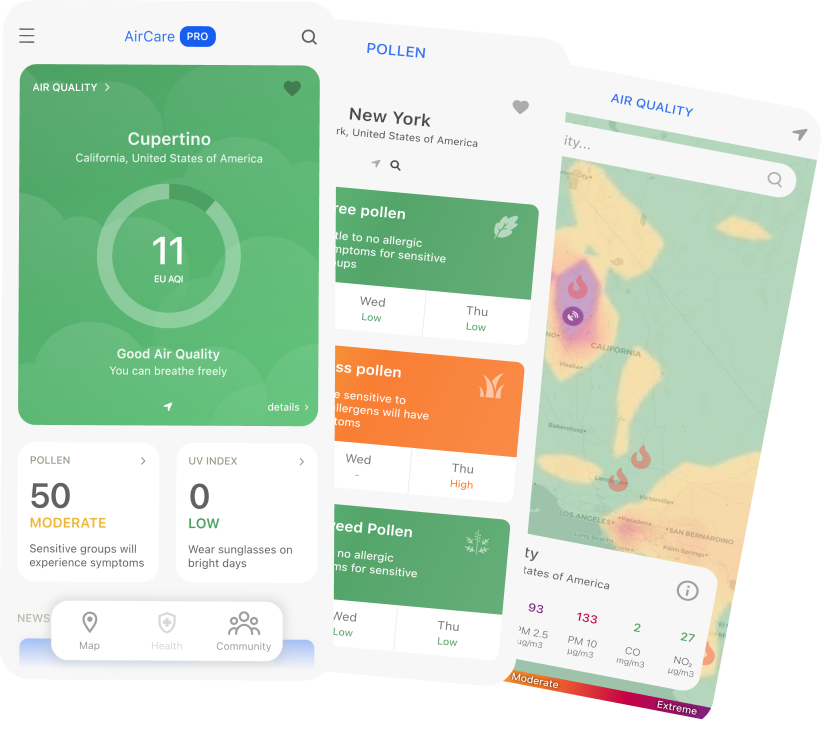Hay fever, also known as allergic rhinitis, is an allergic reaction to pollen, typically when it comes into contact with your nose, mouth, throat, and eyes. The symptoms of hay fever include itchy and watery eyes, a runny or blocked nose, frequent sneezing, and an itchy throat or mouth.
Hay fever is triggered by many things, such as ragweed pollen which is common in fall, grass pollen which is found in spring and summer, and cockroach droppings and dust mites which are present throughout the year.

Worldwide, hay fever affects between 10% and 30% of the population. Some people are allergic to one type of pollen, while others are unlucky enough to suffer symptoms caused by several types of pollen.
Trying to relieve hay fever symptoms can feel like a full-time job. Even if you spend all of your time indoors in an effort to avoid plants and flowers, it can often feel like you can’t escape the constant sneezing.
For this reason, we’ve compiled a list of 9 simple tips that will help you avoid hay fever, as well as reduce the severity and frequency of your symptoms.
1. Reduce Exposure to Allergens
Keep your windows and doors closed as much as you can during high-pollen days. When you’re outdoors, wear a dust mask, especially if you’re located near pollen-producing plants. We also recommend wearing an umbrella when you’re in places where pollen is floating around.
2. Wear Proper Clothing
Wear close-fitting clothes outdoors, especially when it’s allergy season. To keep the dust out of your hair, remember to wear a hat. Sunglasses will help to avoid the pollen getting in your eyes. Lastly, dab petroleum jelly on your nostril so it will catch the pollen that’s trying to get in your nose.
3. Change When You Get Inside
When you’re outside, pollen sticks to your clothes. The first thing you should do once you get home is getting out of those contaminated clothes and go into the shower.
Make sure that you’ve thoroughly curbed your face, body, hair, and eyebrows. If you live with other people, make sure everyone does the same thing.
4. Avoid Drying Clothes Outside
Washing your clothes is important to get rid of the pollen, but what’s equally important is drying them inside so you don’t go back to where you started. If your home isn’t spacious enough to do this, at least keep your clothes inside during the morning and evening, when the pollen levels are highest.
5. Take Medication
Whether you have symptoms like a runny nose or nasal congestion, always have medication on hand. If your eyes are itching, always can eye drops with you.
If you suffer from hay fever, it’s best you consult your doctor or pharmacist about the best medication to keep it under control.
6. Clean Regularly
Reduce the chance of pollen or dust in your house by having a regular cleaning routine. Wash curtains and bedding frequently, and use dust-mite-proof covers for mattresses, pillows, and comforters. Instead of sweeping, try mopping your floors, because sweeping strips up more allergens in the air.
7. Use An Air Purifier
Even if you regularly clean and keep your doors and windows shut, airborne allergens can still get into your house. Getting an air purifier with a HEPA filter is a great solution for those who suffer from allergies.
8. Avoid Gardening
It’s obvious that by gardening you’re exposing yourself to pollen, so this is one chore that you will need to avoid. If you must, make sure that you wear a hat to protect your hair while hardening, and shower and wash your hair once you’re done.
It’s best that you get gardening out of the way in early spring when the pollen count is lower.
9. Pet Care
Once you’ve taken all the precautionary measures to take care of yourself, it’s time to take care of your pets, who are also pollen carriers. Every time your pet goes outdoors, they pick up pollen and bring it back to your home. For this reason, it is vital that you bathe them frequently.
Do you want to know the pollen count in your area? Download AirCare – our free mobile app that tracks pollen from your pocket, and check out the AirCare blog!





